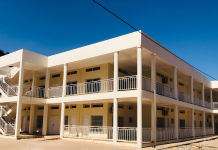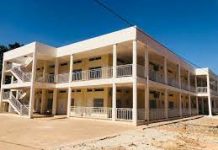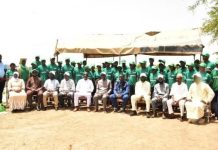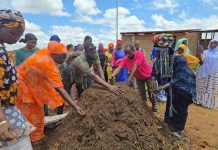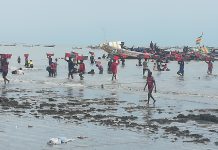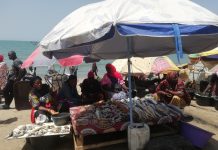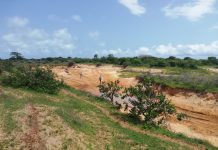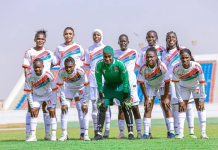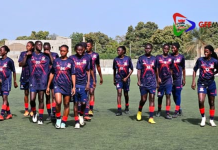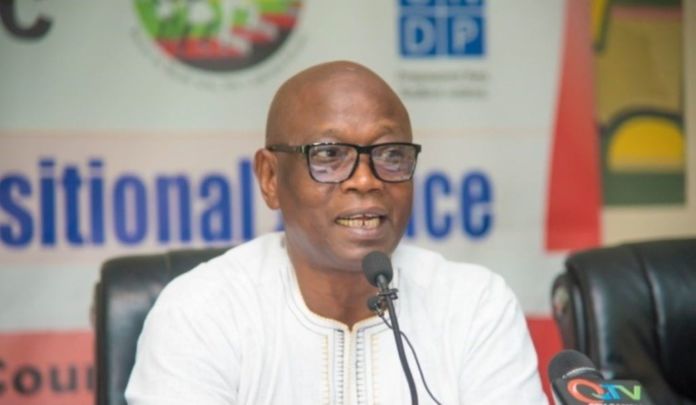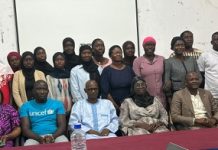By Dr. Baba Galleh Jallow
Increasingly, The Gambia’s Truth, Reconciliation and Reparations Commission (TRRC) is being referred in global transitional justice circles as the Gambian Model. This reference to the TRRC as a model truth commission derives from the fact that not only did the commission register remarkable success in the execution of its mandate, but also that it differed from conventional truth commission models both in its institutional set-up and its operational strategies. The fact that implementation of the TRRC recommendations is today the key driver of Gambia’s transitional justice process is testament to the commission’s success in delivering its mandate.
Before we delve into the substance of this lecture, it might help to define what the term transitional justice means. Transitional justice refers to the various policies, processes and mechanisms that a society adopts to deal with a history and legacy of violence and human rights violations. The key pillars of transitional justice include truth-seeking, accountability, reconciliation, reparations, and guarantees of non-recurrence.
The scope and nature of every transitional justice process is determined by four inter-related elements. These elements are context, mandate, institutional character, and operational strategy. The context, usually of past human rights violations and abuses, determines the mandate. The mandate in turn, determines what form of policy, process or mechanism is required to execute it, and what operational strategy should be adopted for the purpose. For a transitional justice process to succeed, it is imperative that these four elements are in sync and work harmoniously together. We will now proceed to examine how these four elements shaped the scope and nature of Gambia’s transitional justice process.
The Gambian Context
The broader historical context of Gambia’s transitional justice process is the period between the attainment of independence in February 1965 and the fall of the Jammeh dictatorship in January 2017. This 52-year period covered the existence of the first two governments the country had: the People’s Progressive Party government of Sir Dawda Jawara (1965 – 1994), and the AFPRC / APRC dictatorship of Yahya Jammeh (1994 – 2017). The PPP era is relevant to our transitional justice process to the extent that it led to the onset of the Jammeh dictatorship. The more relevant context of our transitional justice process is the period July 22nd 1994 when the military overthrew the PPP government to January 2017, when the dictatorship ended with the exile of Yahya Jammeh. This latter period was when all the human rights violations and abuses addressed by the various transitional justice mechanisms created since 2017 were committed.
The scope and nature of the various types of human rights violations and abuses committed under the Jammeh dictatorship required that The Gambia adopts a holistic approach to transitional justice. This means that various types of policies and mechanisms were established to address various aspects of the violations and abuses of the dictatorship. Consequently, the Constitutional Review Commission was created to ensure that the abuses of power and bad laws in the 1997 Jammeh era constitution are rectified in a more citizen and development-friendly constitution. The Janneh Commission was created to address the abuse of Gambia’s economic assets by the dictator and his enablers. The National Human Rights Commission was created to serve as a permanent watchdog against human rights violations in the country. The Security Sector Reform process was initiated to address the various loopholes in the command structure and operations of our various security agencies that allowed them to be complicit in human rights violations and abuses. And the TRRC was created to examine the scope and nature of these human rights violations and abuses with a view to making recommendations designed to prevent their recurrence. Each of these transitional justice mechanisms had its own institutional mandate or objectives.
It is important to note that The Gambia is also blessed with a number of unofficial or non-governmental transitional justice mechanisms dealing with the violations and abuses of the Jammeh dictatorship and their consequences. In the aftermath of Jammeh’s fall, civil society organizations like the Victims Center, WILL, WAVE, ANEKED, Fantanka, Survivors of the Presidential Alternative Treatment Program, the Yelef Initiative, and the Solo Sandeng Foundation were created mainly by victims to deal with various aspects of the human rights violations that occurred under the dictatorship. In April this year, these organizations formed AVLO, the Alliance of Victim-led Organizations in order to pool their resources and present a united front in pursuit of their objectives. One major international transitional justice organization, the International Center for Transitional Justice (ICTJ) has been active in the country from the very beginning. The ICTJ was very supportive of the TRRC during the establishment phase of the commission and throughout its operations. The ICTJ continues to do a great job of working with government, non-governmental organizations and youth groups to facilitate and promote the country’s transitional justice process.
We will now focus on looking at the making and workings of the TRRC, which is the subject of this lecture.
The TRRC Mandate
Specifically, the TRRC was tasked to create an impartial historical record of the human rights violations and abuses committed under the Jammeh dictatorship between July 22nd 1994 and January 31st 2017 in order to “promote healing and reconciliation; respond to the needs of victims; address impunity; prevent repetition of the violations and abuses suffered by making recommendations for the establishment of appropriate preventive mechanisms including institutional and legal reforms; establish and make known the fate and whereabouts of disappeared victims; provide victims an opportunity to relate their own account of the violations and abuses suffered; and grant reparations to victims in appropriate cases.” It was a broad and challenging mandate, and the commission was given two years to complete its task. It ended up taking a little less than three years to get the job done and submit a final report and recommendations to the President as required by the TRRC Act.
Institutional Character
The institutional character and workings of the TRRC significantly differed from the institutional character and workings of earlier truth commissions. By the time the TRRC was established, there had been at least 40 truth commissions around the world. In Latin America, Asia, Africa, and Canada societies had turned to the truth commission model to deal with legacies of widespread violence and human rights violations in the wake of civil wars, dictatorships and discriminatory government practices against ethnic minorities, as was the case in Canada. Each of these truth commissions grew out of a specific context that determined its mandate, institutional character, and operational strategy. The Gambia was lucky to have this rich history of truth-seeking efforts to draw lessons from. A combination of academic research, visits to other countries with truth commission experiences – in our case Sierra Leone and South Africa, nationwide consultations with the Gambian public, and the perceived needs of our own specific country context all contributed to the drafting of our enabling legislation – the TRRC Act, and the actual creation of the commission itself.
The nature of our specific context, our mandate, and lessons learned from other truth commission experiences required that we create a commission that differed in significant ways from conventional models. For instance, past truth commissions operated largely as institutional monoliths, with the commissioners doing most of the work, from statement taking to research and investigations to hearing witness testimonies. In these models, truth commission secretariats existed as mere back-ups to the commissioners, providing secretarial and other needed support but otherwise marginal to the truth-seeking process.
Our specific context and mandate also required that we conceive of our truth-seeking process as a national conversation. Ideally, this should be true of all truth-seeking processes. For while only a certain percentage of any population is likely to directly suffer human rights violations during a conflict or dictatorship, as a body politic, the entire nation is always affected. Historically however, with a few exceptions, truth commissions often operated without the active consciousness or participation of the majority of citizens of a country. We needed to ensure that all Gambians at home and abroad were actively involved in the TRRC conversation, either as direct participants, or at the very least as an informed audience.
Our context required that the TRRC addressed issues that were not spelled out in our enabling legislation or mandate. For example, one of the main enabling factors of the Jammeh dictatorship was the country’s political culture. This was a political culture in which the president was considered to be all-powerful and above the law. This particular issue could not be the subject of a truth-seeking process. Rather, it required a reverse process of truth-telling by the commission to the people. We believed that the best guarantee against the abuse of power by government was an enlightened and empowered citizenry.
In the light of the above considerations, we created a truth commission that operated on the twin principles of inclusiveness and transparency. Inclusiveness in the TRRC process operated at three levels, namely the institutional level, the national level, and the global level. At the institutional level, it meant that we had a commission in which the Secretariat, traditionally marginalized in truth-seeking processes, was well equipped to perform a central role in the work of the commission. That was why we created several specialized units under the Secretariat to assist in research and investigations, including statement taking, help register and cater to the needs of victims, and engage the general public and specific national constituencies in conversation about the commission’s work and mandate. Thus, we had as part of the TRRC Secretariat a well-staffed Research and Investigations Unit, a Victim and Psychosocial Support Unit, a Women’s Affairs Unit, a Youth and Children’s Coordination Unit, a Reconciliation Unit, a Communications Unit, a Translation Unit, a Transcribing Unit, and a Proofreading and Publication Unit. These units complimented the work of the Commissioners whose task largely consisted of hearing witness testimonies and ultimately making findings and recommendations to be included in the commission’s final report.
Operational Strategy
In line with the dictates of our context, our mandate and institutional character, the TRRC launched a double-pronged operational strategy: On one hand were the hearings – both public and private – presided over by the Commissioners and legal team. On the other hand, and in pursuit of our principle of inclusiveness, we launched and conducted the Never Again campaign through a series of outreach activities carried out by the specialized units of the Secretariat. The Victim Support Unit worked directly with victims and their families and offered psychosocial and other support as needed. The Unit also coordinated work on our interim reparations program and budget through which we offered medical, educational, livelihood and other forms of assistance to victims even as the TRRC process was ongoing. The Women’s Affairs Unit ensured that the concerns of women across the country were noted and that women had a chance to make their voices heard either through the hearings or through village dialogues or Women’s Listening Circles. The Youth and Children’s Unit travelled to over 60 schools across the country to have conversations with students and teachers, as well as out-of-school youths on the work of the commission and how they can help prevent recurrence of dictatorship and human rights violations in this country. This unit also brought students from schools including the Gambia College and University of The Gambia to attend live public hearings at the TRRC headquarters. The Reconciliation Unit worked closely with the Commission’s Reconciliation Committee to facilitate both individual and communal reconciliation activities. In this way, we actualized a large part of the TRRC process as a national conversation.
Additionally, we made the hearings open to the public and had all the public activities of the Commission broadcast live on TV, radio and social media. This meant that Gambians at home and abroad, and all members of the international community interested in the work of the commission could watch or listen to the public hearings, site visits and other activities of the Commission. It was to Gambia’s advantage that we had our truth-seeking process in the age of social media and information technology that facilitated remote access and virtual participation.
In the meantime, the translation, transcribing, proofreading and publication units operated internally to ensure access and democratization of the information coming out of witness testimonies. This aspect of our operational strategy was meant to ensure transparency and in the final analysis, to make it hard for anyone to question the integrity of our truth-seeking process.
Mission Accomplished
The TRRC officially started operations in February 2018 with the appointment of the executive secretary. The period from February to September 2018 saw the setting up of the institutional structures of the Secretariat, the recruitment and training of staff and the media in truth commission reporting, and the nomination, selection and appointment of commissioners. The 11 Commissioners of the TRRC were sworn in on October 18, 2018 and the first public hearings were held on January 7, 2019. The Commission completed its work and submitted its final report and recommendations to the President on November 24, 2021.
Encouraging Signs
In line with the dictates of the TRRC Act, the Government published the report on December 23, 2021 and issued its White Paper on the TRRC recommendations in May 2022. In the White Paper, the Government accepted all but two of the Commission’s 267 recommendations, and pledged to implement all the accepted recommendations.
It is to the Government’s credit that while progress has been slow, a lot has been done in terms of implementation of the TRRC recommendations: Significant steps that have been taken in this regard include the passage of the anti-torture bill, the Special Accountability Mechanism bill, the Special Prosecutor’s Office bill, and the Victim’s Reparations Fund bill. As we speak, the Government is exploring the possibility of establishing a hybrid court to try those most responsible for human rights violations. We also know that an initial round of interviews has been conducted for candidates for the proposed Victims Reparation Commission. Just last week, we learned that a special task force has been set up to implement the TRRC’s recommendation on finding the whereabouts of disappeared persons. We also understand that the Government is working on finalizing the National Peace Commission bill. Meanwhile, civic education has been introduced into the school curriculum. Work on these and other implementation activities are coordinated by a new Post-TRRC Project Unit housed at the Ministry of Justice.
Those familiar with truth commission processes around the world will agree that The Gambia has achieved much more than many countries in terms of implementing truth commission recommendations. In most cases, truth commission reports are not even made public, and where they are made public, they are often left to gather dust on the shelves of government offices. Here in The Gambia, implementation of the TRRC recommendations is currently a major topic of public discourse. Significant steps have been taken by the Government, and we are hoping that the momentum will be sustained and that at the end of the day, victims will get all the justice they deserve, the country will further heal from the pains of the ousted dictatorship, and the smiling coast shall keep smiling into a brighter and better future.
Note: Baba Galleh Jallow is former Executive Secretary of the TRRC. This piece was originally delivered as Episode 4 of the Paradise TV lecture series, Buhaba Red Carpet.
